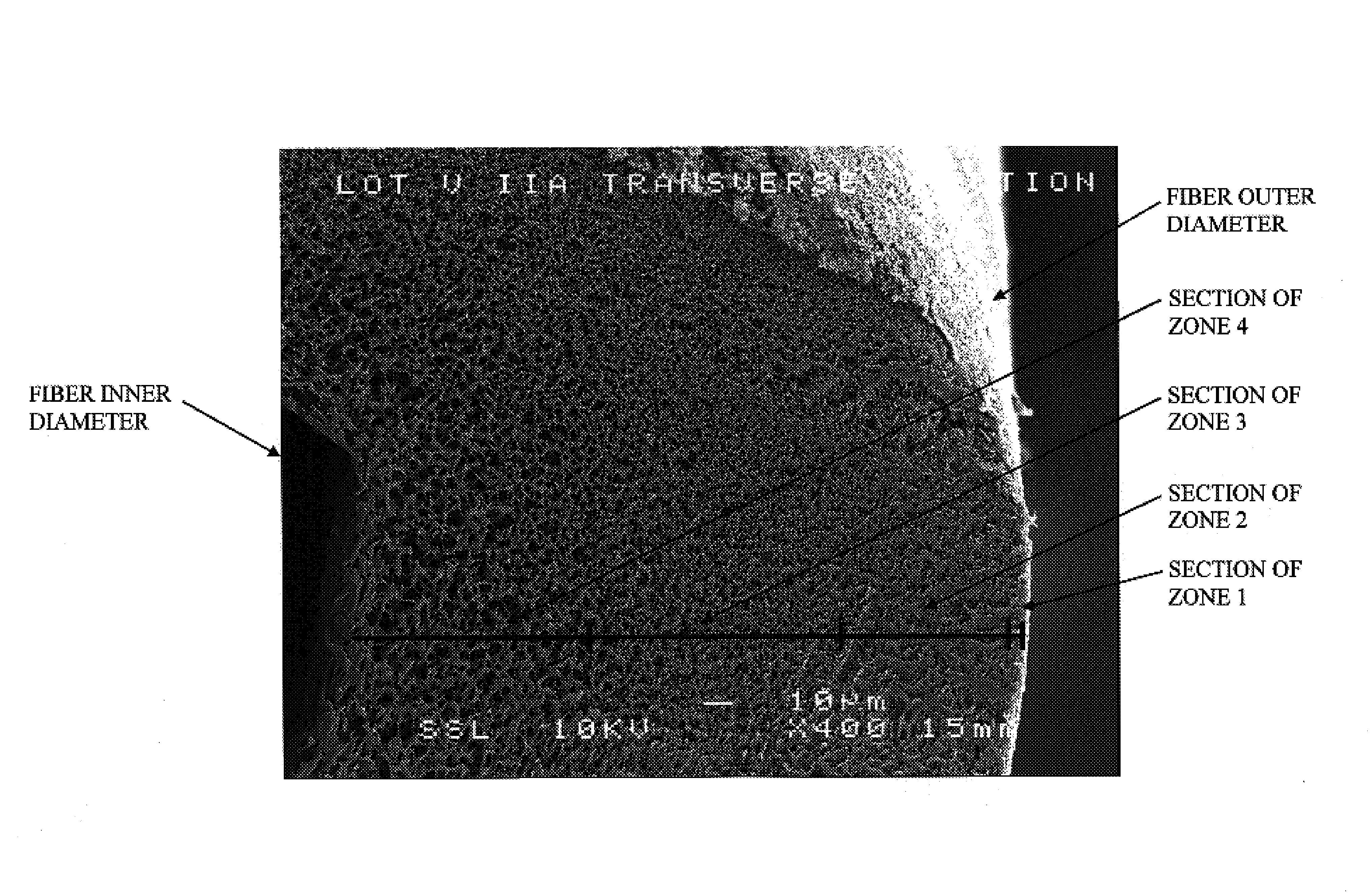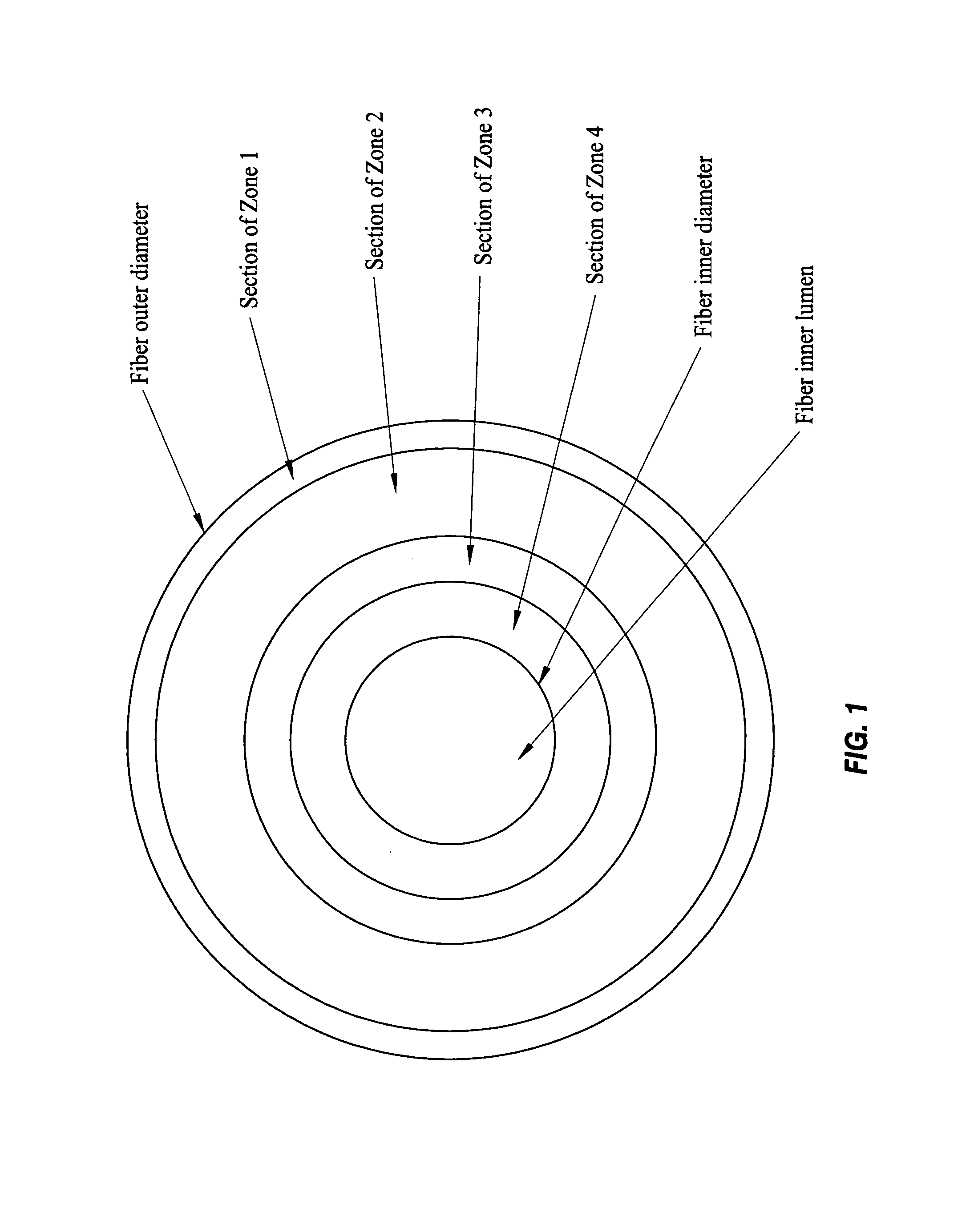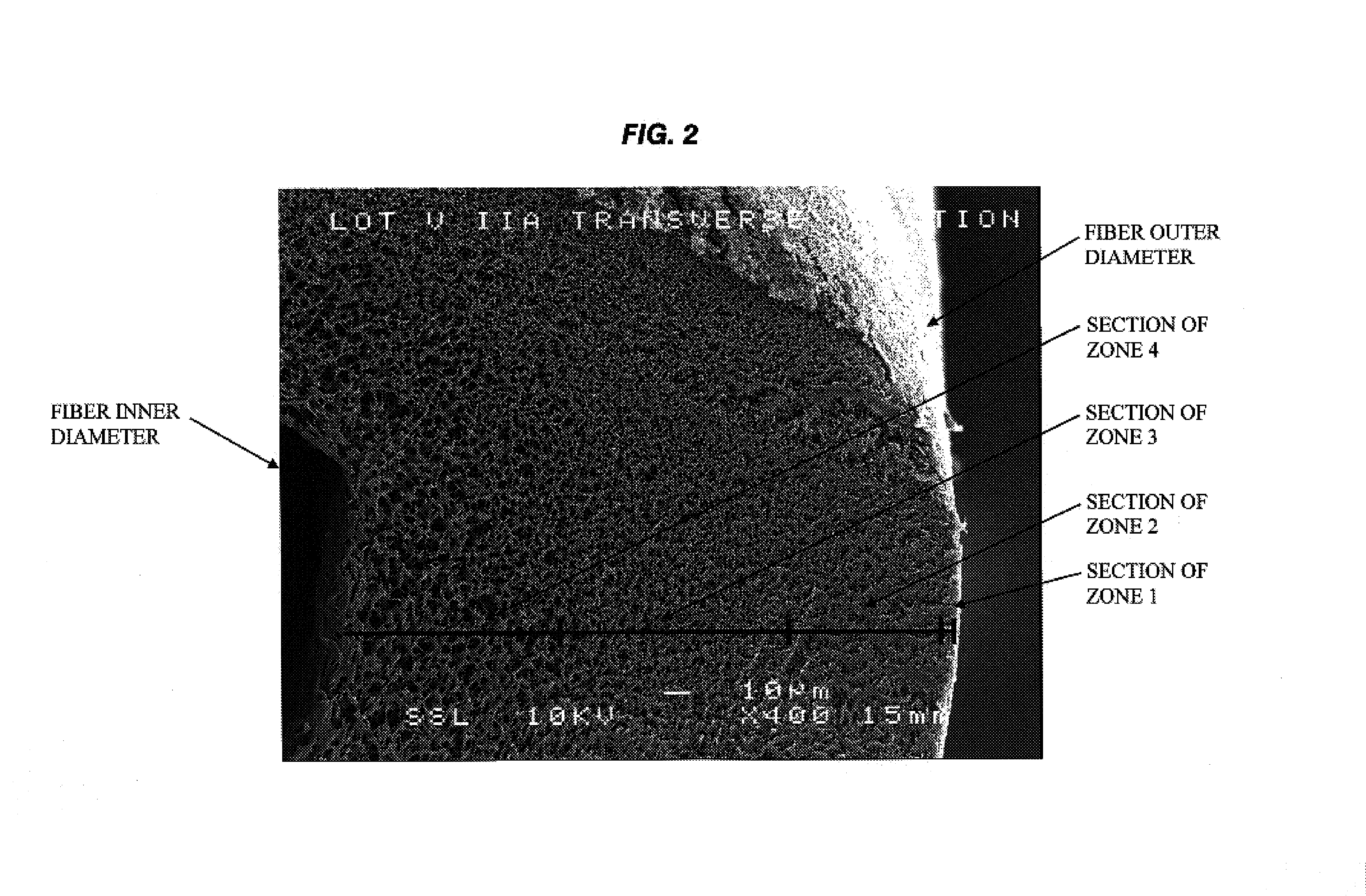Specialized hollow fiber membranes for in-vivo plasmapheresis and ultrafiltration
a technology of plasmapheresis and ultrafiltration, which is applied in the direction of membranes, filtration separation, separation processes, etc., can solve the problems of inconvenient placement of in-vivo plasmapheresis, poor elongation and breaking strength of conventional fiber membranes, and inability to meet the requirements of in-vivo placement for safety reasons, etc., to achieve biocompatibility of performance properties and materials, improve permeability rate, and increase the effect of permeability
- Summary
- Abstract
- Description
- Claims
- Application Information
AI Technical Summary
Benefits of technology
Problems solved by technology
Method used
Image
Examples
Embodiment Construction
[0013]As illustrated in FIGS. 1–7, the features of the fiber wall of the membrane of the invention include a pore and void structure defined within frames or solid walls which form boundaries of the pores. The pores are voids of variable definitive sizes which permit passage of fluid through the fiber wall to the lumen and which pores obstruct the passage of components larger than the pore diameter. As illustrated particularly in FIG. 3, the pores are irregular-shaped voids bounded by solid frames to form irregular tortuous paths for irregular and regular-shaped solutes. The wall structure of the fiber from the outer surface to the lumen is a continuum with non-linear pore and void distribution. The resulting structure is a continuous change in mass density between the outer surface of the fiber and the inner lumen surface and whereby the pore size gradually changes between the fiber wall surfaces. The fiber wall illustrated is substantially without macrovoids. The fiber wall struct...
PUM
| Property | Measurement | Unit |
|---|---|---|
| elongation | aaaaa | aaaaa |
| pore diameter | aaaaa | aaaaa |
| pore diameter | aaaaa | aaaaa |
Abstract
Description
Claims
Application Information
 Login to View More
Login to View More - R&D
- Intellectual Property
- Life Sciences
- Materials
- Tech Scout
- Unparalleled Data Quality
- Higher Quality Content
- 60% Fewer Hallucinations
Browse by: Latest US Patents, China's latest patents, Technical Efficacy Thesaurus, Application Domain, Technology Topic, Popular Technical Reports.
© 2025 PatSnap. All rights reserved.Legal|Privacy policy|Modern Slavery Act Transparency Statement|Sitemap|About US| Contact US: help@patsnap.com



